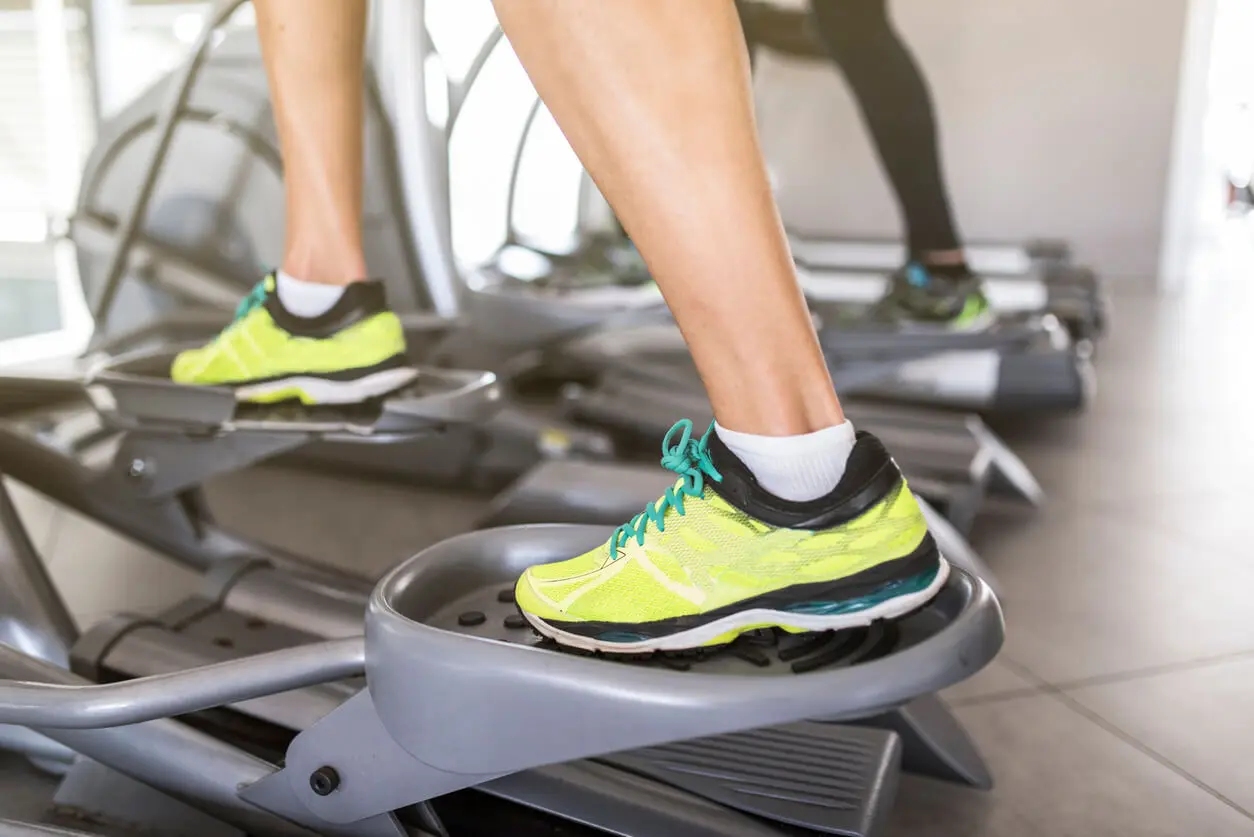Training with Stair Climbers: Benefits and Tips

Training with stair climbers is part of a set of cardiovascular exercises in which the lower extremities are strengthened, particularly the legs and buttocks. The correct position for you to practice this exercise is with your head facing forward and keeping the spine straight, with your shoulders back. This way ,you raise and lower your legs forward or backward.
The name of this gym machine refers to the movement you execute. It simulates climbing a peak or climbing stairs. It consists of pedals or steps, handles, or handles, and in some cases, a digital panel to control the intensity.
The preparation for you to perfect the development of this activity is vital in your training plan. That’s why the results will depend on the time you exercise on the machine.
With a good rhythm and endurance, you will be able to achieve positive goals. In today’s article, you’ll learn all about the benefits of stair climbers and the best tips for your progress.
The benefits of training with stair climbers
Training with stair climbers is a great way to strengthen and tone various muscle groups of the body, especially those located in the abdomen, buttocks, and front and back of the thigh. In addition, you exercise the cardiovascular system.
We think you may also enjoy reading this article: What Exercises does Jennifer Lopez Include in Her Routine to Maintain a Slim Figure?
1. They boost your cardio endurance
With regular use of the stair climber, you increase your cardiovascular endurance – i.e. your heart and blood vessels.
It takes less time for blood to reach the muscles. Your heartbeat and lung ventilation become more efficient as you spend more time on this routine. Also, you boost your overall body endurance, as well.

2. They’re a great form of recreation
Regardless of the type of stair climber you train on, you have several options for having a good time while doing it. As a low-impact exercise, you can do it while listening to your favorite music or watching a TV show.
With a simple step sequence, you can stay focused between the activity and your favorite distraction. Music, in particular, seems to be a good choice in these cases.
3. They improve your muscle performance
The leg muscles increase your endurance, as the performance of this workout depends on them. If you start by running 10 minutes on the stair climber, you’ll notice how your legs will have the capacity to resist longer as the days go by.
Gluteal and thigh performance is also increased in a complementary manner.
4. They provide the possibility of being self-taught
The vast majority of stairclimbers include start, speed, and pause controls at the level of your thumbs. That’s why you should not stop at any time during the development of the routine – only when you consider it necessary to rest.
However, the most important thing – apart from the controls that the machine has – is that you know that you’re able to guide and instruct your training. Always do this under the approval of a specialist while understanding that you can set the lapses for your body and then recover.
5. They’re suitable for everyone (with just a few exceptions)
As you can execute a plan of high and moderate intensity, stair climbers are designed so that people of any level and age can use them. Whether you’re a beginner or even a professional, you can use them effectively in all of your workouts.
If you suffer from knee problems, back injuries, or discomfort in the waist and lower back, it’s best to avoid using them, because they could aggravate your condition. In any case, consult a doctor for approval of your exercises.
6. They provide low physical and joint impact
Climbing stairs may be an everyday part of your life, or at least an occasional activity when visiting different places. That’s why the use of stair climbers is a natural activity and is intended to carry out intensive workouts, but without fear of negative effects on the joints in the medium term.
Although there is a contraindication for previous knee injuries, it’s unlikely that you will injure them if they were healthy before starting. So feel free to go for this cardio activity!
Stair climbers workout tips
It’s best to add a warm-up phase before you get on the machine. You can try doing a gentle jog without moving from the spot. You can also place your arms at your waist and slowly rotate your trunk from side to side.
After doing several repetitions, bend your trunk forward with your legs together. Try to reach your toes.
Pre-exercise your legs, calves, and ankles to get the most out of your time on the stair climber. Start standing with your body straight, feet together, and arms outstretched. Then, bend down and rise back up to the starting position. Repeat this about 5 times.
Then, continue standing, but now bring your legs together and stretch your neck to try to stand up on your toes and hold for a few seconds before coming back down. Finally, to warm up your ankles, you can sit on a chair and stretch your legs from there. To do this, keep your foot at a right angle to your leg and start doing 360-degree turns with your ankle.
These sessions can take a little over 5 minutes in total.

Like this article? You may also like to read: 9 Exercises that Will Help Increase the Size of Your Breasts
Recommendations to increase your resistance in training with stair climbers
If you’re a beginner, it’s best to start with 10 to 15-minute training sessions with stair climbers. You can gradually increase your routine by 5 minutes until you reach a maximum of 40 minutes dedicated to this plan.
Likewise, you can mix this exercise with more physically demanding workouts, such as CrossFit. However, do this based on your defined goals and objectives.
In short, perseverance is your greatest ally. This is because it drives you to progress in any discipline.
The key is that you exercise as many times as possible and realize the movements that work best for you. The time you dedicate to training will determine the positive results you can see in the immediate future.
All cited sources were thoroughly reviewed by our team to ensure their quality, reliability, currency, and validity. The bibliography of this article was considered reliable and of academic or scientific accuracy.
- Padilla J. Planificación del entrenamiento deportivo. Primera edición. Venezuela: Editorial Episteme; 2017.
- Bompa T, Buzzichelli C. Periodización del entrenamiento deportivo. Cuarta edición. España: Editorial Paidotribo; 2015.
- Weineck J. Entrenamiento total. Primera edición. España: Editorial Paidotribo; 2015.
- Aguilar Bolívar, A. (2019). Actividad física musicalizada para mejorar la capacidad aeróbica en el adulto mayor de Indeportes Boyacá (Doctoral dissertation, Universidad Pedagógica y Tecnológica de Colombia).
- Chulvi-Medrano, I., & Tortosa, L. M. Entrenamiento cardiovascular utilizando máquinas elípticas/Cardiovascular training with elliptical machines. Revista Internacional de Medicina y Ciencias de la Actividad Física y del Deporte, (45).
This text is provided for informational purposes only and does not replace consultation with a professional. If in doubt, consult your specialist.








